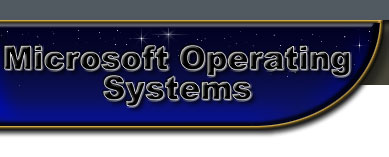
Microsoft Windows 2000 Back ups
Microsoft IntelliMirror is a term used to describe features of Windows 2000 that help ensure the availability of a user’s data and computer configuration. The following list includes its three key elements and explain how each relates to disaster protection and recovery;
1. Data backup (User data management)
If user’s machines crash, or if they are unexpectedly away from their computer, they will have access to the information they need.
Folder redirection can be done seamlessly via the use of a group policy, or user can manually set this up.
Using My Documents folder redirected to a share on a Windows 2000 server
on the network, in this case when a user saves a document to My Documents
folder, it will automatically be saved both on local machine and on the
network share
2. PC Configuration recovery (User settings management)
As with user profiles in Window NT 4.0, personalised machine settings
can be accessed by Windows 2000 Professional users from whatever machine
they use on the network with setting management feature of IntellMirror.
Therefore if computer crashes, can be easily installed onto a new machine
3. Application installation and repair
If users accidentally remove essential application or system files or crash the system, they can use the software installations and maintenance feature of IntellMirror to rebuild their machines with same applicationa they had previously
Microsoft Backup Utility
Methods of backing up a PC by using external tools;
* Tape drives
* External hard disks
* Zip or Jaz drives
* Recordable CD-ROM drives
* Logical drives
Repairing Windows 2000 Professional
Disaster protection is important and you’ll need to be prepared. If system files become corrupt or are accidentally deleted or services are keeping the operating system from loading, you have several options for repairing or restoring your PC:
* Safe Mode
* Recovery Console
* Emergency repair process
* Remote OS installation
Recovery Console
Instead of running the PC in Safe Mode, you can simply use the Recovery Console to disable those specific services or drivers or to repair a corrupted Master Boot Record, CD-ROM or a network share to your PC.
You can access the Recovery Console in one or two ways:
* From a command prompt, change the directories to your Windows 2000 CD.
Run\i386\winnt32.exe /cmdcons to install the Recovery Console,
Reboot your machine, you’ll notice a new option for starting Windows 2000 Professional
* Use the Windows 2000 CD or startup disks to start your computer. Select the Recovery Console option when you are prompted to choose repair options
Emergency repair process
Windows NT 4.0, Windows 2000 lets you create an Emergency Repair disk (ERD) for repairing your system. To use the ERD, you’ll need to reboot your machine with Windows 2000 Setup disks or Windows 2000 Professional CD.
During Setup, you’ll be asked if you would like to install Windows 2000 and press yes and follow the installation procedures. You’ll then have two options for repairing Windows 2000:
* Fast repair - require no user interaction, automatically ttempts to
repair problems
* Manual repair - enables user to choose to repair to the Registry, system
files, the boot volume or
startup environment
Remote OS installation
A user starts a client with either the PXE remote ROM or an RIS remote boot disk, the client can request an installation of Windows 2000 Professional from a remote RIS server.
The server will, in turn provide one of the following types of installations;
* CD-based
Similar to installing the OS with a CD, but the source files are on another machine (the RIS server) on the network
* Remote Installation Preparation (RIPrep)
After installing Windows 2000 Professional, installing applications and making configuration changes on one workstation, an administrator clones the image of that machine and replicates it to an RIS server.
| This site was designed using Adobe Photoshop 7.0 and Dreamweaver 3 by Alex Trigueros for an ITT Tech Class on Microsoft Windows Operating Systems- Any Questions can be sent to GkDragon (AT) NetScape.Com |